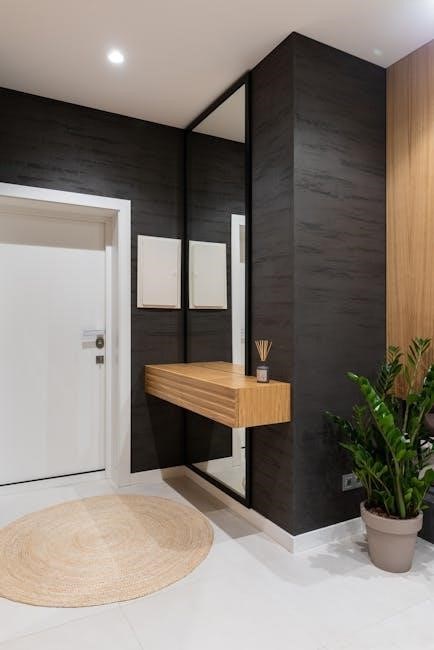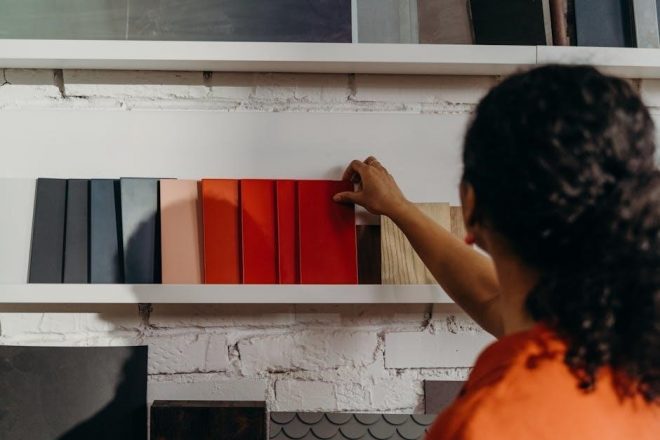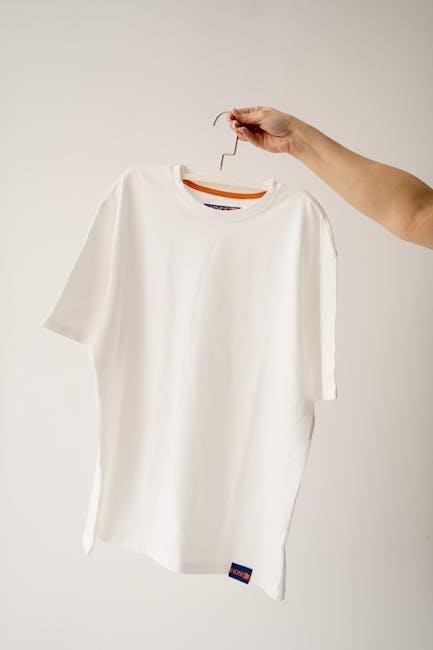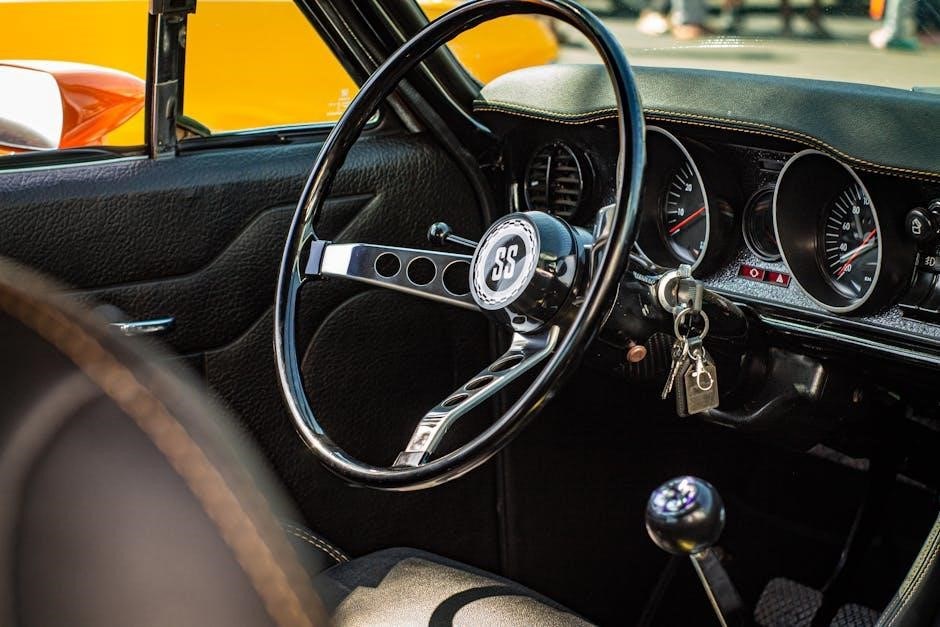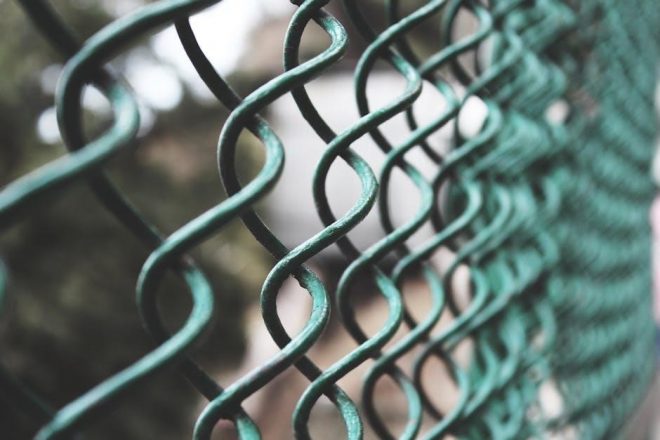Selecting the perfect entryway rug involves more than just aesthetics; it requires careful measurement and consideration of size, shape, and material to ensure functionality and style.
Understanding the Importance of Rug Size in Entryways
The size of an entryway rug plays a crucial role in both functionality and aesthetics. A rug that is too small may not provide adequate coverage or comfort, while one that is too large can overwhelm the space. Proper sizing ensures the rug can withstand high foot traffic, protect flooring, and create a welcoming atmosphere. It also helps in defining the entryway area visually, making it feel more organized and inviting. Additionally, the right size ensures ease of maintenance and longevity of the rug. Measuring accurately and considering the shape of the entryway are essential steps in selecting a rug that fits perfectly and serves its purpose effectively. A well-chosen rug size enhances both practicality and style in any entryway.
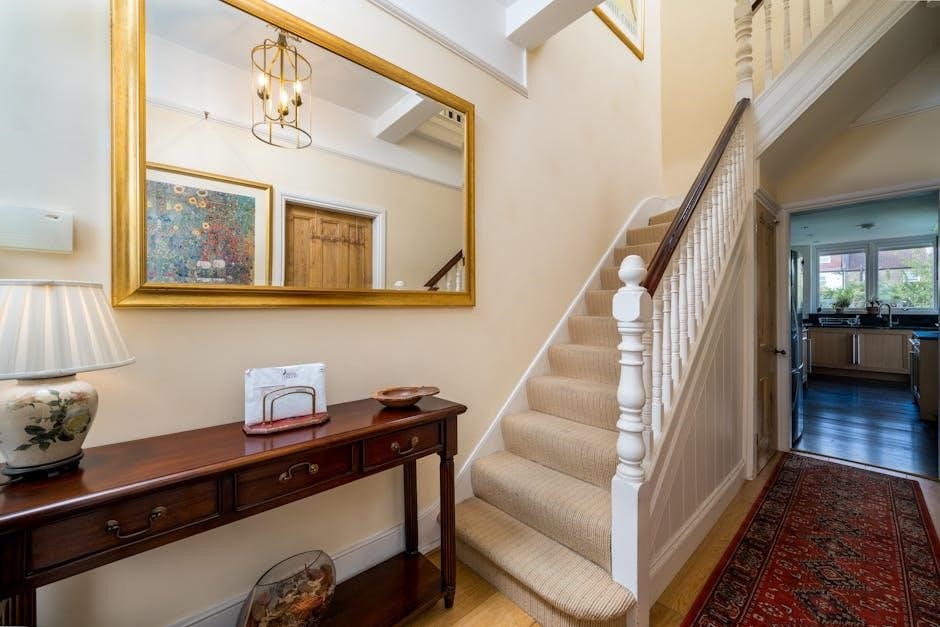
How to Measure Your Entryway
Measure your entryway’s width at the narrowest point using a tape measure. Subtract 24 inches to find the maximum rug size that fits comfortably.
Determining the Shape of Your Entryway
The shape of your entryway plays a crucial role in selecting the right rug. Begin by assessing the layout: is it rectangular, circular, or narrow? For standard entryways, rectangular or runner rugs are ideal, while round rugs suit curved or circular spaces. Measure the width at the narrowest point and consider the flow of traffic. Visualize how the rug will fit without obstructing movement. The shape should complement the space, ensuring functionality and aesthetics. Choose a rug that aligns with your entryway’s unique dimensions and style for a harmonious look.
Measuring for Round, Rectangular, or Runner Rugs
Measuring for round, rectangular, or runner rugs requires precision to ensure the perfect fit. For round rugs, measure the maximum diameter of the entryway to avoid overcrowding. Rectangular rugs need both length and width measurements, focusing on the longest and widest points. Runner rugs, designed for narrow spaces, should be measured for length to cover the entire pathway. Use a measuring tape to record accurate dimensions, considering the space around furniture or fixtures. Ensure the rug size aligns with the entryway’s proportions, leaving enough floor space for a balanced look. Proper measurement guarantees functionality and enhances the entryway’s aesthetic appeal.
Choosing the Right Size for Your Entryway
Choosing the right rug size enhances functionality and style. Small entryways suit 3×5 feet rugs, medium spaces 4×6 feet, and larger areas 5×8 feet or more.
Small Entryways: 3×5 Feet Rugs
A 3×5 feet rug is ideal for small entryways, providing a welcoming touch without overwhelming the space. This size works perfectly for single-door entrances or narrow hallways, ensuring easy movement and functionality.
It strikes a balance between style and practicality, offering enough coverage to catch dirt and moisture while maintaining a sleek appearance. For added convenience, this size is easy to clean and replace, making it a durable choice for high-traffic areas. Place it just in front of the door or under a small bench to create a cozy yet functional entryway.
Medium Entryways: 4×6 Feet Rugs
A 4×6 feet rug is perfect for medium-sized entryways, offering ample coverage without overwhelming the space. This size works well for double-door entryways or slightly larger mudrooms.
It provides a comfortable surface for shedding shoes and can easily fit under small benches or consoles. The 4×6 feet rug is versatile, allowing for a balanced look while leaving enough floor space around it. For high-traffic areas, opt for durable materials and a low-pile design to ensure easy maintenance and longevity. This size is ideal for creating a functional yet stylish entryway that welcomes guests and keeps your home tidy.
Larger Entryways: 5×8 Feet or Larger Rugs
Larger entryways benefit from rugs measuring 5×8 feet or bigger, providing generous coverage for high-traffic areas. These rugs are ideal for spacious foyers, double-door entryways, or open-plan living spaces. A 5×8 feet rug creates a welcoming and grand entrance, offering ample space for placing furniture like benches or consoles. For even larger areas, consider oversized rugs to ensure the entire entryway is covered. Durable materials and low-pile designs are recommended for these high-traffic zones to withstand wear and tear. Additionally, a rug of this size can help define the entryway while complementing the home’s decor. Ensure the rug is thin enough to avoid tripping hazards and fits seamlessly with the surrounding floor plan for a polished look.
Material and Pile Height Considerations
Material and pile height are crucial for durability and comfort. Low-pile rugs are ideal for high-traffic entryways, offering easy maintenance and longevity, while high-pile options provide plush comfort but require more care.
Best Materials for High-Traffic Entryways
For high-traffic entryways, durable materials are essential to withstand constant use. Nylon and polypropylene rugs are top choices due to their stain resistance and ease of cleaning. Natural fibers like sisal or jute offer a stylish look but may require more maintenance. Rubber-backed rugs provide excellent grip and moisture resistance, making them ideal for busy entryways. Consider materials with built-in UV protection to prevent fading from sunlight exposure. Additionally, look for rugs with a dense weave or low pile height, as they are less likely to trap dirt or flatten under heavy foot traffic. The right material ensures your entryway rug remains functional and visually appealing over time.
Low-Pile vs. High-Pile Rugs for Entryways
When choosing between low-pile and high-pile rugs for entryways, consider functionality and maintenance. Low-pile rugs are ideal for high-traffic areas as they are durable, easy to clean, and less prone to flattening. They also reduce tripping hazards and work well under doors. High-pile rugs, while softer and more comfortable, may not withstand heavy foot traffic as effectively and can trap dirt and moisture. For entryways, low-pile rugs are generally recommended due to their practicality and longevity. However, if comfort is a priority, a high-quality high-pile rug with a sturdy backing can still be a suitable choice. Balance aesthetics with functionality based on your entryway’s specific needs and traffic level.
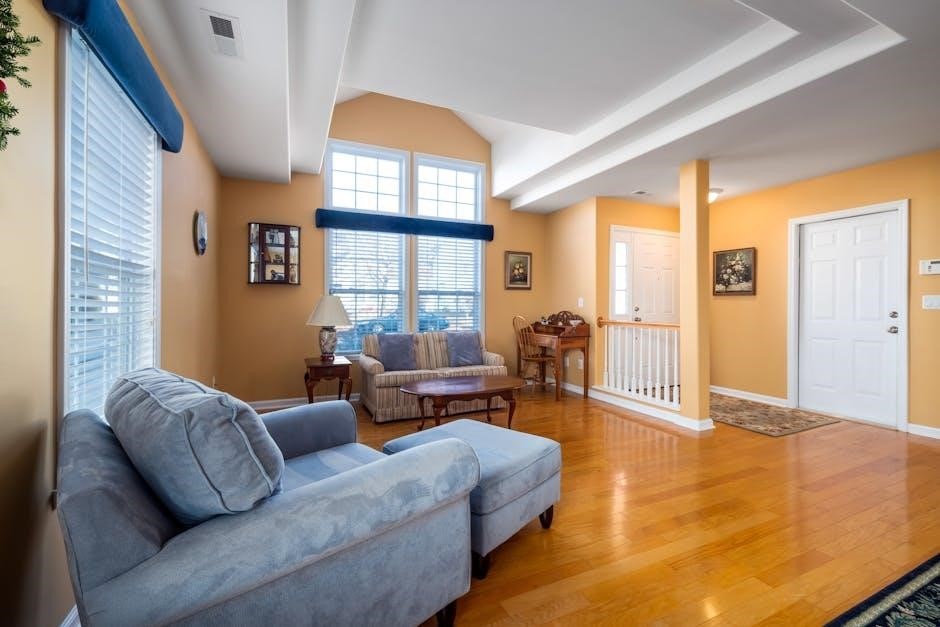
Maintenance and Placement Tips
Proper placement and regular cleaning are key to maintaining your entryway rug’s functionality and longevity. Ensure it fits securely, leaving enough space around edges for a polished look always.
How to Position the Rug for Maximum Efficiency
Positioning your entryway rug correctly enhances both functionality and aesthetics. Ensure the rug is centered, leaving equal space on all sides to create a balanced look. For narrow entryways, align the rug lengthwise to guide foot traffic. In wider spaces, a square or round rug can serve as a focal point. Place the rug so it extends under the front legs of furniture, like a bench or console table, to unify the area. Secure the rug with a non-slip underlay to prevent shifting and ensure safety. Proper placement not only maximizes efficiency but also prolongs the rug’s lifespan by avoiding uneven wear.
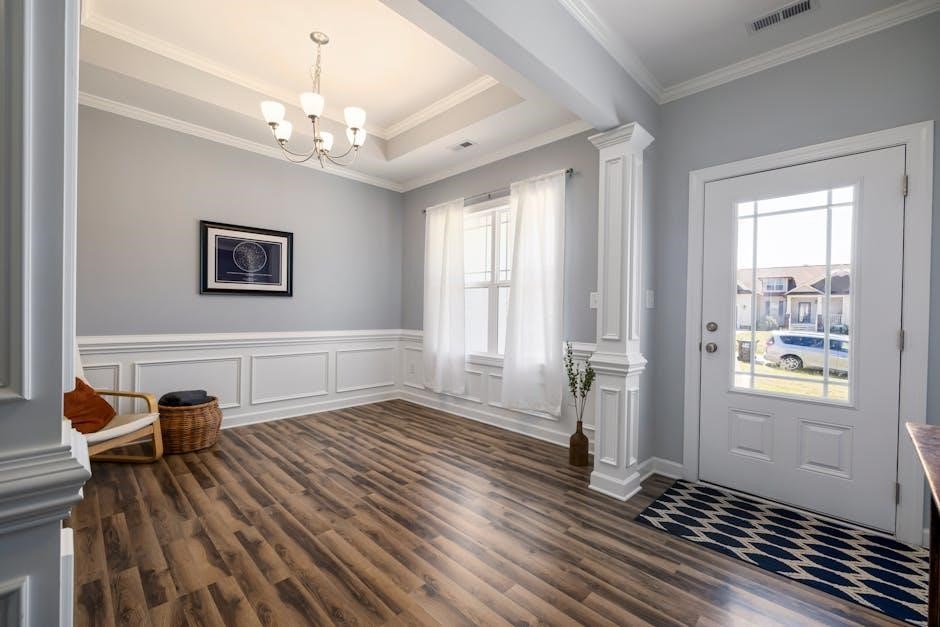
Keeping the Rug Clean and Long-Lasting
Maintaining your entryway rug is crucial for both functionality and aesthetics. Regular vacuuming removes dirt and debris, while spot cleaning spills immediately prevents staining. For deeper cleaning, use mild detergents and avoid harsh chemicals that might damage the material. High-traffic rugs may need professional cleaning periodically. Placing a rug pad underneath enhances grip and protects the rug from wear. Rotate the rug every few months to ensure even distribution of foot traffic. By following these care tips, your entryway rug will remain clean, durable, and visually appealing for years to come.
Selecting the right entryway rug size enhances both functionality and style, ensuring a warm and inviting first impression for your home.
Final Tips for Selecting the Perfect Entryway Rug
When choosing an entryway rug, ensure it complements your space by considering size, shape, and material. Measure accurately to avoid overcrowding or leaving too much floor exposed. Opt for durable materials like nylon or polypropylene for high-traffic areas. Low-pile rugs are ideal for entryways as they are easier to clean and less likely to trap dirt. Position the rug to allow equal floor space around it for a balanced look; Vacuum regularly and rotate the rug every few months to maintain its appearance. Additionally, ensure the rug is thin enough to fit under doors and aligns with your home’s décor. By following these tips, you’ll find a rug that enhances functionality and style in your entryway.
